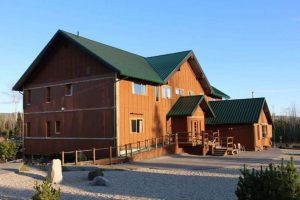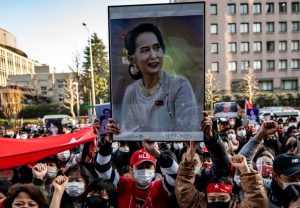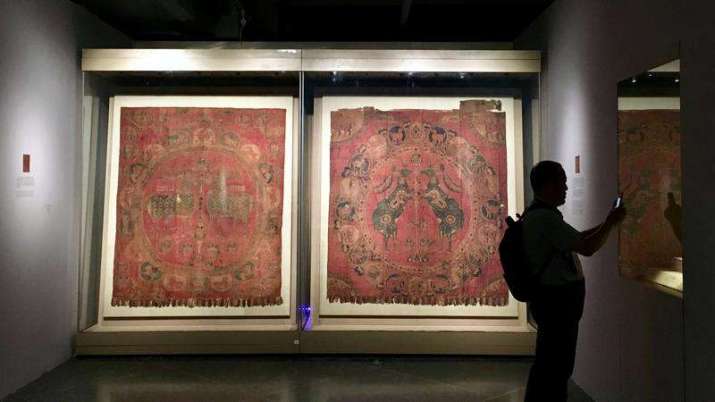
China’s premier center of Dunhuang scholarship and Silk Road studies, the Dunhuang Academy in Gansu Province has jointly organized an exhibit of artifacts from the Imperial Tibetan period (612–842) with the Pritzker Art Collaborative. “Cultural Exchange Along the Silk Road: Masterpieces of the Tubo Period (7th–9th Century)” opened on 2 July and will run until 22 October.
According to the online magazine Sixth Tone, the exhibition is comprised mostly of items from the collection of Margot and Thomas J. Pritzker (a philanthropic business family behind the world’s most coveted architecture prize, the Pritzker Architectural Prize) and from the Bern-based foundation Abegg-Stiftung. A further 22 Chinese museums and six international institutions (including the Art Institute of Chicago, Moscow’s Hermitage Museum, and the Qatari royal family’s Al Thani Collection) contributed items to the exhibition. More than 120 artifacts in total are on display, many of them for the first time in China.
The seven-section exhibition’s period of focus was dominated by what was known as “Tubo,” the old name for the Tibetan empire ruled by the Yarlung dynasty. The Tibetan empire was the central political and military power on the Tibet-Qinghai Plateau, and a pivotal counterbalance to the Tang dynasty (618–907), vying for supremacy over the Hexi Corridor and the oasis kingdoms that controlled important trade, cultural, and missionary outposts between the two Eurasian powers.
The Tibetan empire also saw the First Diffusion of Vajrayana Buddhism in Tibet, with many of the foundational figures of Tibetan Buddhism appearing during this time, including the three Dharma Kings (chögs gyal) Songtsen Gampo, Trisong Detsen, and Ralpacan, and Padmasambhava. The collapse of the Yarlung house in 842 was followed by a “dark age,” after which Tibetan Buddhism gradually underwent the Second Diffusion and reconstituted itself into the four major schools that exist today.
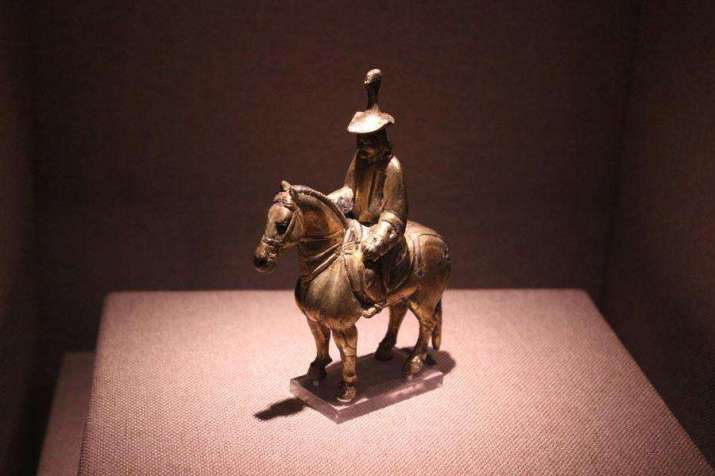
Exhibition curator and director of the Pritzker Art Collaborative David Pritzker told the Global Times: “The whole concept of the Silk Road, and the way it really touches on all of human history across Eurasia, is really powerful. And I think that there is no end to the complexity of it. But to bring the Tibetan Plateau more into the viewpoint of the whole Silk Road and to more periods of engagement in the Silk Road, and in Central Asia, is an exciting topic.” (Global Times)
He also noted: “Studies of Tibetan culture around the world have largely been influenced by the dominance of Buddhism, and it tends to overshadow other aspects. Nowadays, we are starting to understand the importance of the cultural exchanges that went beyond religion.” (China Daily)
For Pritzker—who is the son of Thomas and Margot Pritzker and holds a PhD from Oxford on the early textual history of Tibet—the exhibition is a project that has been fermenting since childhood, much of which he spent in Nepal. He inherited his parents’ love of Himalayan culture, which began with a visit to the mountains in 1975.
According to the Global Times: “The exhibition presents a picture of how cultural exchanges along the Silk Road contributed to the culture of the Tubo kingdom, such as the introduction of Buddhism from India, the impact craftsmen from Nepal had on art and the Tang dynasty’s impact regarding its political system, astrology, medicine, culture and arts.” (Global Times)
In an extended feature, the China Daily reported on highlights of the exhibition’s many artifacts: “A burial mask with engraved animals, a figurine of a rider on horseback, a brooch inset with turquoise, amethyst, and aquamarine—all made of gold—all demonstrate, not just the prosperity of that ancient era on the plateau, but its different facets. . . . The daily life of the Tubo people is portrayed through a hunting scene on painted lacquer arrow quiver, a child’s silk garment and horse-riding gear.” (China Daily)
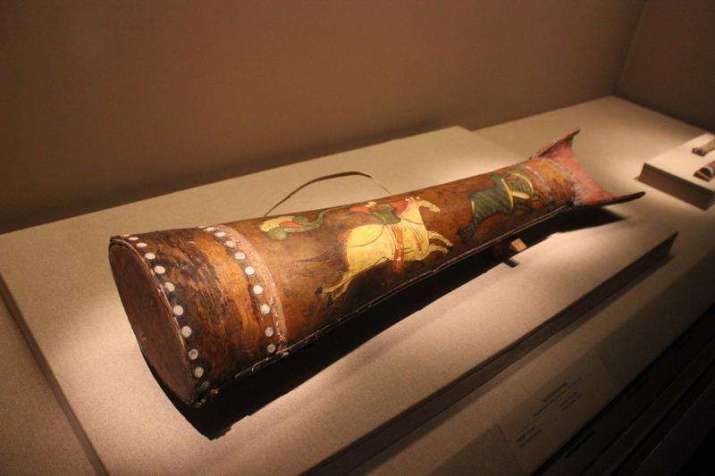
Huo Wei, an archeologist from Sichuan University, told the China Daily: “The Tubo people introduced Buddhist art from the Tang regions and what was today’s Nepal, along with techniques in craftsmanship for making gold and silver artifacts from Persia. It amassed a huge number of silk pieces through trade, despite the fact that Tubo people never learned how to make silk, probably due to the restrictions within their natural environment. We like to refer to it as the Silk Road on the Plateau.” (China Daily)
The exhibition opened during a period of heavy rainfall in the area, prompting the temporary closure of the Mogao Grottoes for safety reasons on 17 July. China’s Xinhua News Agency reported that “if the installed monitoring equipment finds the relative humidity exceeding 63 per cent, the grottoes will be closed temporarily.” However, the deputy director of the Dunhuang Academy, Luo Huaqing, stressed that there was currently no danger to the art and cultural items in the caves. (Xinhua)
First constructed in 366 CE and housing more than 2,000 colored sculptures and 45,000 square meters of murals in 735 caves, the Mogao Grottoes have been a Silk Road hub and major complex of Buddhist rock-cut caves for a millennium. The local arid climate with limited rainfall is a major factor for the heritage site’s longevity. Recently, however, the city of Dunhuang has seen increasingly heavy rainfall since the Dunhuang Academy began tracking records of precipitation in 1989. (Xinhua)
See more
World’s first exhibition on Tibetan culture along the Silk Road to open in Dunhuang (CGTN)
Beyond Buddhism: Exhibition Spotlights Early Tibetan Culture (Sixth Tone)
World heritage grottoes closed again due to heavy rain (Xinhua)
China-US exhibition in Dunhuang tells the story of Tibetan Tubo Kingdom and Silk Road (Global Times)
Cultural Crossroads (China Daily)





